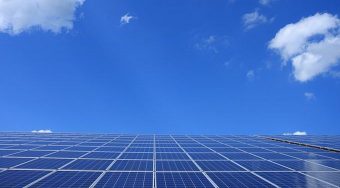
The World Bank announced last week that it would contribute $54.4 million in financing to help the Mongolian government address important electricity reliability issues while also supporting the development of the country’s first large-scale solar PV power plant.
The landlocked nation of Mongolia suffers from numerous bottlenecks in its electricity distribution, due to obsolete and inefficient distribution networks, leading to significant distribution (transmission) losses — as high as 25% on some Mongolian networks. In a country with a population of just over 3 million, more than 300,000 people live without electricity.
The new financing from the World Bank will help to address some of these distribution issues by upgrading assets and expanding distribution capacity. Specifically, the World Bank will look to upgrade and expand the capacity of power distribution infrastructure in the Baganuur-Southeast and the Erdenet-Bulgan distribution networks, which are responsible for providing electricity to nine of the country’s twenty-one provinces.
“More reliable access to electricity will improve the lives of families and help businesses thrive,” said James Anderson, World Bank Country Manager for Mongolia. “The World Bank is committed to continuing our partnership with Mongolia to strengthen the power sector and explore options for renewable energy to help the country pursue sustainable development.”
As regards to renewable energy, the World Bank will work to build the country’s first large-scale solar PV farm, a 10 MW project developed outside the Central Energy System which will provide electricity to Mongolia’s western region — a region which is highly reliant upon energy imports, sourcing 70% of its power from imports.
“We are encouraged by the government’s target to increase the share of renewables to 30 percent by 2030,” — said Peter Johansen, Senior Energy Specialist of the World Bank. “With its abundant solar and wind power resources, the country is now considering to more effectively and efficiently incentivize renewable energy investment to fully use its potential.”
Mongolia currently only has 5.100 MWe worth of solar PV capacity, according to the International Renewable Energy Agency, as part of a larger renewable energy capacity of 84.7 MWe, dominated by 50.60 MWe of onshore wind capacity, and 23 MWe of large-scale hydropower. The new solar capacity addition will therefore triple the country’s cumulative solar capacity, bringing a significant boost goal of boosting its renewable energy capacity from 7.62% in 2014 to 20% by 2020 and 30% by 2030, as part of its Intended Nationally Determined Contribution (INDC) to the Paris Climate Agreement (PDF). Additionally, Mongolia’s INDC includes a promise to reduce electricity transmission losses from 13.7% in 2014 to 10.8% by 2020 and 7.8% by 2030.
Source: cleantechnica.com




